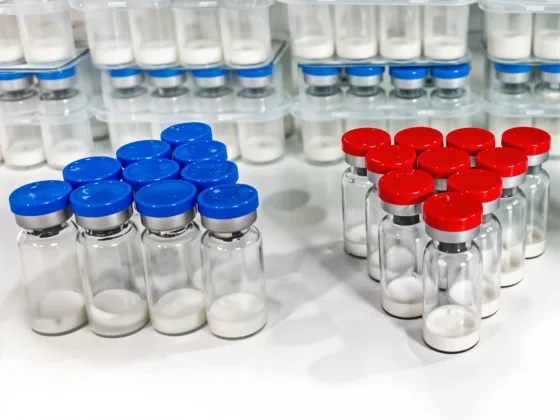Table of Contents Show
Artificial Intelligence has reached a level of maturity and influence that few imagined a decade ago. In 2025, AI is no longer confined to research labs or speculative fiction—it’s deeply embedded in healthcare, education, finance, entertainment, and governance. The latest AI technologies are characterized by their scale, versatility, ethical sophistication, and growing autonomy.
This article explores the most advanced AI developments shaping the global landscape today, providing insight into how they work, why they matter, and where they’re headed next.
1. Foundation Models at Scale
In recent years, the AI community has gravitated toward massive foundation models—general-purpose AI systems trained on enormous datasets and capable of performing a wide array of tasks without task-specific tuning. While GPT-4 and its contemporaries dominated in 2023, 2025 has ushered in a new wave of ultra-efficient foundation models that are smaller, faster, and more energy-efficient.
These models can reason, converse, generate media, and perform data analysis across languages and domains. What’s groundbreaking is their ability to self-improve through reinforcement and active learning, allowing them to adapt on the fly to changing tasks, user preferences, and environments.
2. Multimodal and Hypermodal AI
While early generative AI focused on text and images, today’s most advanced systems are multimodal, capable of understanding and generating across text, image, video, audio, and even 3D data.
In 2025, we see the rise of hypermodal AI, which doesn’t just translate between formats—it fuses them. For instance, users can now describe an animation in words, which AI will bring to life in synchronized video and audio, complete with realistic voice, lighting, and emotional tone.
This has revolutionized content creation, entertainment, education, and marketing. Interactive storytelling, AI-powered filmmaking, and AI tutors capable of real-time visual and auditory responses are now common tools.
3. Real-Time Edge AI
Traditionally, AI models required powerful cloud computing infrastructure. But advancements in Edge AI—running AI algorithms directly on local devices—have changed the game.
With 2025’s new generation of AI chips and compact model architectures, smartphones, wearables, drones, and even home appliances can now run real-time AI models with impressive accuracy. This decentralization reduces latency, enhances privacy, and makes AI more accessible in low-connectivity environments.
Examples include AI-powered augmented reality glasses, smart hearing aids that filter background noise, and autonomous delivery drones that process sensor data on the fly.
4. AI and Scientific Discovery
Artificial Intelligence is now central to scientific research. It’s not only analyzing data but generating new hypotheses, designing experiments, and even proposing solutions to previously unsolvable problems.
Some of the most exciting breakthroughs include:
- AI-designed materials for superconductors and climate solutions.
- Synthetic biology powered by generative AI, which is creating novel proteins, enzymes, and even sustainable fuels.
- Climate modeling systems that simulate decades of global environmental changes in hours, enabling better preparation and policy-making.
With models like DeepMind’s “Genesis” and IBM’s “ScienceMind,” AI is transitioning from a supportive tool to a collaborative scientific partner.
5. Emotionally Aware AI and AI Ethics
AI systems in 2025 have become far more emotionally aware. Through voice inflection, facial expression analysis, and contextual learning, emotionally intelligent AI is transforming mental health care, customer service, and digital companionship.
At the same time, the rise of emotionally intelligent systems raises questions of consent, manipulation, and authenticity. Consequently, AI ethics has become a core component of development. Every major tech firm now has ethics boards and implements “responsible AI pipelines” with fairness, bias detection, and explainability as integral checkpoints.
This is where tools like the AI checker play a role—ensuring content transparency and detecting whether a given text or media piece was AI-generated. The proliferation of deepfakes and synthetic content has made AI checkers crucial in education, journalism, and online safety, helping to maintain trust in digital environments.
6. AI in Education: Personalized, Scalable, Global
AI-driven education is entering a golden age. In 2025, students in rural or underserved areas now have access to personalized, high-quality education through AI tutors that adapt in real-time to individual learning styles.
Language learning, math, science, and even music are now taught by AI educators who provide detailed feedback, track emotional engagement, and adjust teaching strategies accordingly. These systems are multilingual, culturally sensitive, and accessible through low-cost devices—narrowing global educational divides.
Additionally, universities are leveraging AI for curriculum design, research mentorship, and plagiarism detection, ensuring academic integrity while enhancing efficiency.
7. Synthetic Media and AI Creativity
AI is now capable of creating full-length films, composing symphonies, painting original artworks, and even inventing new genres of media. AI artists collaborate with human creators, acting as muses or co-authors.
One of the biggest debates in 2025 is around authorship and originality. Should an AI-generated novel qualify for literary awards? Can an AI-generated artwork be copyrighted? These questions are now central in intellectual property law and cultural discourse.
Despite the debates, AI creativity is being embraced in advertising, entertainment, gaming, and branding, where speed, innovation, and novelty are prized.
8. Robust AI Governance and Regulation
As AI systems become more autonomous and capable, the push for regulation has intensified. In 2025, most major economies have implemented comprehensive AI legislation that governs everything from algorithmic transparency to surveillance and facial recognition.
Global cooperation is also increasing, with the AI Accord signed by 70+ nations to set ethical standards, encourage knowledge sharing, and prevent the misuse of AI in warfare or misinformation.
AI audits, red-teaming, and real-world simulations are now part of the product development lifecycle, ensuring that systems are safe, fair, and aligned with human values.
Conclusion
The advances in AI in 2025 are not just technical—they are cultural, economic, and philosophical. We are moving into an AI-first era, where the question is no longer “What can AI do?” but “How should we use it responsibly?”
AI is enabling unparalleled innovation and human empowerment. But with great power comes an equally great responsibility to ensure that AI serves the public good, respects individual rights, and enhances—not diminishes—what it means to be human.
As we navigate this exciting and uncertain future, the collaboration between human ingenuity and artificial intelligence will define the next chapter of human progress.







